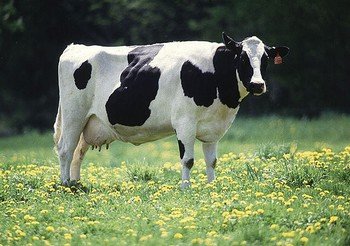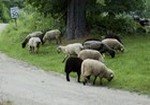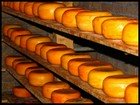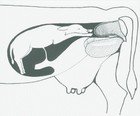How to Get more Milk out of your Milking Cows with Good Feed and Care
Others like the Channel Island dairy cattle breeds for milking such as the Guernsey, the Jersey and the Alderney. These cows are famous for the richnes.s of their milk but they need to have a higher level of care in their stabling, diet and handling than other breeds of cattle. Out of the 3 types of Channel Island breeds the Guersney is the most manageable and the hardiest.
Then there is the Ayrshire dairy cattle. These are hardy cows that may not give as much milk as the Holstein, or produce milk that is as rich as the Channel Island breeds but the milk is full of flavor and are steady producers.
And although many people who are homesteading either keep goats or cows for milking the success in dairy farming depends largely upon the proper feeding of stock. Without proper feeding, your milk yields will be much lower than expected. So how do you improve your milk yields?
There are two questions that the dairy farmer should always ask himself:
1) Am I feeding my milking cows as cheaply as I can? and,
2) Am I feeding the best rations for milk and butter production?
Of course the dairy cow can be kept alive and in fairly good milk flow on many different kinds of food, but in feeding, as in everything else, there is an ideal to be sought.
What, then, is an ideal ration for milking cows?
Before trying to answer this question the word ration needs to be explained. By ration is meant a sufficient quantity of food to support properly an animal for one day. If the animal is to have a proper ration, we must bear in mind what the animal needs in order to be best nourished. To get material for muscle, for blood, for milk, and for some other things, the animal needs, in the first place, food that contains protein. To keep warm and fat, the animal must, in the second place, have food containing carbohydrates and fats. These foods must be mixed in right proportions.
With these facts in mind we are prepared for an answer to the question, What is an ideal ration for milking cows?
First, it is a ration that, without waste, furnishes both in weight and bulk of dry matter a sufficient amount of digestible, nutritious food.
Second, it is a ration that is comparatively cheap.
Third, it is a ration in which the milk-forming food (protein) is rightly proportioned to the heat-making and fat-making food (carbohydrates and fat). Any ration in which this proportion is neglected is badly balanced.
Now test one or two commonly used rations for milking cows by these rules.
Would a ration of cotton-seed meal and cotton-seed hulls be a model ration?
No. Such a ration, since the seeds are grown at home, would be cheap enough. However, it is badly balanced, for it is too rich in protein; hence it is a wasteful ration.
Would a ration of corn meal and corn stover be a desirable ration?
This, too, since the corn is home-grown, would be cheap for the farmer; but, like the other, it is badly balanced, for it contains too much carbohydrate food and is therefore a wasteful ration.
A badly balanced ration does harm to milking cows in two ways: first, the milk flow of the dairy cow is lessened by such a ration; second, the dairy cow does not profitably use the food that she eats.
The following table gives an excellent dairy ration for the farmer who has a silo. If he does not have a silo, some other food can be used in place of the ensilage. The table also shows what each food contains.
| Digestible Matter | |||||
|---|---|---|---|---|---|
| Feed Stuffs | Dry matter | Protein | Carbohydrates | Fat | |
| Cowpea hay = 15 pounds * | 13.50 | 1.62 | 5.79 | .16 | |
| Corn stover = 10 pounds | 5.95 | .17 | 3.24 | .07 | |
| Corn ensilage = 30 pounds | 6.27 | .27 | 3.39 | .21 | |
| Cotton-seed meal = 2 pounds | 1.83 | .74 | .33 | .24 | |
| —— | —— | —— | —— | ||
| Total = 57 pounds | 27.55 | 2.80 | 12.75 | .68 | |
* Alfalfa or clover hay may take the place of cowpea hay.
Care of Miking Cows
As the cow is one of the best money-makers on the farm, she should, for this reason, if for no other, be comfortably housed, well fed and watered, and most kindly treated. In your thoughts for her well-being, bear the following directions in mind on how to milk a cow:
1. If you are not following a balanced ration, feed each day several different kinds of food. In this way you will be least likely to waste food.
2. Feed at regular hours. Milking cows, like people, thrive best when their lives are orderly.
3. Milk your milking cows at regular hours.
4. Brush the udder carefully with a moist cloth before you begin to milk. Cleanliness in handling makes the milk keep longer.
5. Always milk in buckets or cups that have been scalded since the last using. The hot water kills the bacteria that collect in the dents or cracks of the utensil.
6. Never let the milk pail remain in the stable. Milk rapidly absorbs impurities. These spoil the flavor and cause the milk to sour.
7. Never scold or strike the dairy cow. She is a nervous animal, and rough usage checks the milk flow.
Dairy Rules for Milking Cows
Caring for your Milking Cows
1. Whitewash the stable once or twice each year; use land plaster, muck, or loam daily in the manure-gutters.
2. On their way to pasture or the milking-place, do not allow the milking cows to be driven at a faster gait than a comfortable walk.
3. Give abundance of pure water.
4. Do not change feed suddenly.
5. Keep salt always within reach of each cow.
Tips for Milking Cows
1. Milk with dry hands.
2. Never allow the milk to touch the milker's hands.
3. Require the milker to be clean in person and dress.
4. Milk quietly, quickly, thoroughly. Never leave a drop of milk in the cow's udder.
5. Do not allow cats, dogs, or other animals around at milking-time.
Utensils for Milking Cows
1. Use only tin or metal cans and pails.
2. See that all utensils are thoroughly clean and free from rust.
3. Require all cans and pails to be scalded immediately after they are used.
4. After milking, keep the utensils inverted in pure air, and sun them, if possible, until they are wanted for use.
5. Always sterilize the churn with steam or boiling water before and after churning. This prevents any odors or bad flavors from affecting the butter. All cans, pails, and bottles should also be sterilized daily.
How to Prevent the Souring of Milk in the Dairy
They are most plentiful, however, in milk that has soured; hence, if we pour a little sour milk into a pail of fresh milk, the fresh milk will sour very quickly, because we have, so to speak, "seeded" or "planted" the fresh milk with the souring germs.
No one, of course, ever does this purposely in the dairy, yet people sometimes do what amounts to the same thing—that is, put fresh milk into poorly cleaned pails or pans, the cracks and corners of which are cozy homes for millions of germs left from the last sour milk contained in the vessel. It follows, then, that all utensils used for your milking cows should be thoroughly scalded so as to kill all germs present, and particular care should be taken to clean the cracks and crevices, for in them the germs lurk.
In addition to this thorough cleansing with hot water, we should be careful never to stir up the dust of the barn just before milking your cows. Such dusty work as pitching hay or stover or arranging bedding should be done either after or long before milking-time, for more germs fall into the milk if the air be full of dust.
To further avoid germs the milker should wear clean overalls, should have clean hands, and, above all, should never wet his hands with milk. This last habit, in addition to being filthy, lessens the keeping power of the milk. The milker should also moisten the parts of the milking cows which are nearest him, so that dust from the milking cow's sides may not fall into the milker's pail. For greater cleanliness and safety many milkmen curry their cows.
The first few streams from each teat should be thrown away, because the teat at its mouth is filled with milk which, having been exposed to the air, is full of germs, and will do much toward souring the other milk in the pail. Not much will be lost by throwing the first drawings away, and this of the poorest milk too. The increase in the keeping quality of the milk will much more than repay the small loss. If these precautions are taken, the milk will keep several hours or even several days longer than milk carelessly handled. By taking these steps to prevent germs from falling into the milk one can prevent the milk for souring.
The work of the germ in the dairy is not, however, confined to souring the milk. If you are milking cows to make cheese take heed. Certain kinds of germs give to the different sorts of cheeses their marked flavors and to butter its flavor. If the right germ is present, cheese or butter gets a proper flavor. Sometimes undesirable germs gain entrance and give flavors that we do not like. Such germs produce cheese or butter diseases. "Bitter butter" is one of these diseases. To keep out all unpleasant meddlers, thoroughly cleanse and scald every utensil and you and your milking cows will benefit.
See our other page for a step-by-step account on how to milk a cow. There are also some videos on this. Follow the link at the bottom of the page.
Add your Comments on Milking Cows Here!
We have lots of pages where you can contribute to throughout this website, as you can see from the links below. We love hearing from our readers, and hope you will be one of those we hear from too. Please share any additional information, or ask a question on milking cows here, so that other may learn too! Just type in the form below, we will do the rest.
Leave a Comment
Do you have anything that you would like to add after reading this page? We would love to hear your thoughts. If you can add additional information to what has been written here you will be adding value to the website! No need to have any special skills - just type and submit. We will do the rest!
Other Comments
Click below to see comments from other visitors to this page...
What to feed Dairy Cows 




Hello I need a good time table for which kinds of food I should give my cows to increase their cows milk. I don't know what to feed the cows to have more …
Ration Quantity 




I am a missionary in Brazil. We have an orphanage and some milk cows. How much ration do you give milk cows per liter of milk produced?
We use a 20% …
hydroponic food Not rated yet
Either hydroponic food (produced by barley, grain, barley, alfalfa, millet, oats, wheat, grain rye, rye-grass, buckwheat, field peas, clover, sunflowers, …
Lowering Somatic Cell Counts in Cows Not rated yet
There are not many of us can haulers around to do bulk milk. And the state regulations sure don't help any but my question is about somatic cells.
How …
About corn meal to a milk cow Not rated yet
Is it okay if someone cultivates corn densely in a field and feeds young corn and the leaves as well as other matters of the entire stem to the milk cows? …
Did you find this page helpful?
Sharing is a way of saying, "Thanks!"










New! Comments
Do you have something of value to add? Leave me a comment in the box below.